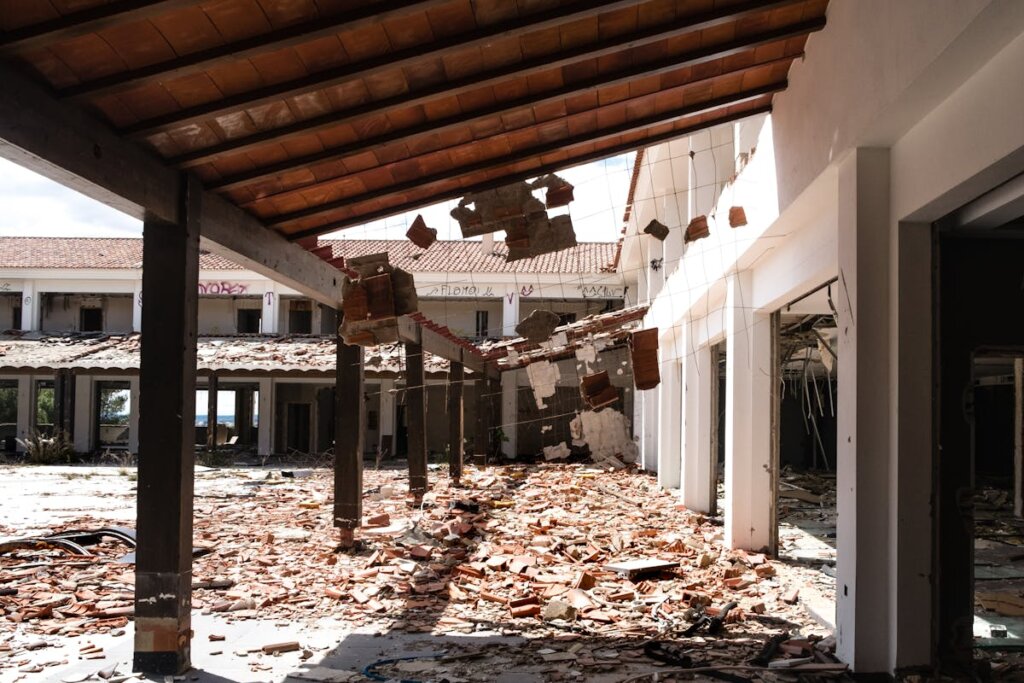
Owning real estate in Connecticut comes with many challenges, but one of the most stressful situations a homeowner can face is dealing with a fire-damaged home. Beyond the immediate emotional and financial toll, there are complicated questions about safety, building codes, insurance claims, and the possibility of the property being condemned.
Understanding Connecticut’s legal and regulatory boundaries is critical if you want to make informed decisions about whether to repair, sell, or walk away from a fire-damaged home.
The Immediate Safety Concerns After a Fire
When a fire strikes, the first concern is always the safety of the people inside. Once the flames are out and the fire department has cleared the site, the condition of the house itself becomes the next pressing issue. Fire can weaken a building’s structure in ways that are not always obvious. Beams may be charred, walls may have hidden smoke damage, and electrical systems may be unsafe.
Entering a fire-damaged home without professional clearance is risky. In Connecticut, local fire marshals and building inspectors typically evaluate the property after a fire to determine whether it is safe to reenter.
Even if the home looks intact from the outside, lingering hazards like unstable floors, asbestos exposure, or water damage from firefighting efforts can make it uninhabitable. Homeowners must take these safety warnings seriously, as ignoring them could put lives at risk and lead to legal consequences if the property is occupied prematurely.
Building Codes and Repairs for Fire-Damaged Homes in Connecticut
Repairing a fire-damaged home is not as simple as fixing what you see on the surface. Connecticut law requires that homes meet current building codes before they can be reoccupied. That means repairs often involve more than just cosmetic work. Electrical wiring, plumbing, roofing, and structural supports may all need to be upgraded to modern standards.
For many homeowners, this comes as a shock. Even if insurance covers part of the repair, the costs of bringing an older home up to code can be substantial. A minor kitchen fire may require a full electrical upgrade, while a more severe fire may demand replacing the roof, framing, or HVAC systems.
Municipal building inspectors will not allow you to move back in until all necessary repairs are made and permits are approved. This process can take months and cost far more than expected.
When a Home Becomes Condemned
In Connecticut, a home may be condemned if it is deemed unsafe for occupancy due to structural instability, extensive smoke or water damage, or hazardous conditions like mold or chemical contamination. Condemnation is a legal designation that prohibits anyone from living in the property until it is either repaired or demolished.
Local building departments typically issue condemnation orders after inspections. Once a fire-damaged home is condemned, the homeowner has limited options. You may be able to repair and bring the property back to code, but if the damage is too extensive, demolition may be required.
This can be devastating, especially if the property carries sentimental value. However, living in or renting out a condemned property is illegal and can result in fines or legal action.
The Role of Insurance and Financial Recovery
Insurance is often the first resource homeowners turn to after a fire. Policies vary, but most standard homeowner insurance covers fire damage. However, the payout process can be complex and may not cover every expense. For example, policies usually exclude code upgrade costs unless you have specific coverage for ordinance and law requirements.
Insurance companies also require thorough documentation. You must prove the extent of the damage, the cost of repairs, and that the work complies with Connecticut’s building codes. Without detailed records and contractor estimates, claims can be delayed or underpaid.
Homeowners should also be aware that insurance checks often go to the mortgage lender first, especially if the home has an outstanding loan. This can complicate how and when funds are released for repairs.
Selling a Fire-Damaged Home in Connecticut
Not every homeowner has the financial ability or desire to restore a fire-damaged home. Selling may be the most practical option, but it comes with unique challenges. Traditional buyers are often wary of properties with fire histories, especially if the home is condemned or requires significant code upgrades. Lenders may refuse to finance these properties, limiting your buyer pool.
One option is to sell directly to a cash buyer. Companies like Neighbor Joe purchase fire-damaged homes as-is, meaning you do not need to invest in costly repairs or code upgrades. This allows you to avoid lengthy listing periods, inspection battles, and appraisal issues.
While the sale price may be lower than a fully repaired home, the convenience and certainty of a cash offer often outweigh the risks of holding on to a distressed property.
Legal Responsibilities of Connecticut Homeowners
Even if you plan to sell, homeowners have legal responsibilities when dealing with a fire-damaged home. Connecticut law requires disclosure of material defects, which includes fire damage. Failure to disclose can result in lawsuits or financial penalties. Additionally, if the property is condemned, you cannot allow anyone to occupy it until it has passed inspection.
Another key responsibility is ensuring that the property does not pose a hazard to neighbors or the environment. Debris, smoke residue, and contaminated water runoff can all create liability issues. If the property is unsafe, the city may order cleanup or demolition and charge the costs back to the homeowner.
The Emotional and Practical Burden
Beyond the legal and financial considerations, dealing with a fire-damaged home is emotionally draining. Many families struggle with the decision to repair or sell, especially if the property has been in the family for generations.
The stress of negotiating with insurance companies, contractors, and local officials can be overwhelming. In these cases, choosing a faster resolution, such as selling to a cash buyer, can provide much-needed relief and allow you to move forward.
Final Thoughts
A fire-damaged home in Connecticut presents unique challenges that extend far beyond visible repairs. Safety risks, building code upgrades, insurance hurdles, and the possibility of condemnation all play a role in how homeowners must move forward.
Understanding the state’s legal and regulatory framework is essential to making smart decisions. For some, repair and restoration may be worthwhile, while others may find selling as-is to a cash buyer the best path. No matter which option you choose, the key is to act with awareness, protect your legal responsibilities, and prioritize safety above all else.

